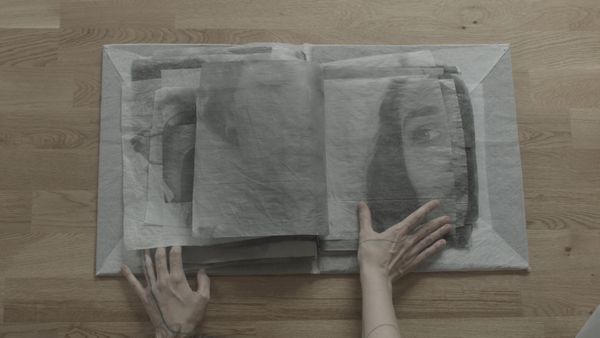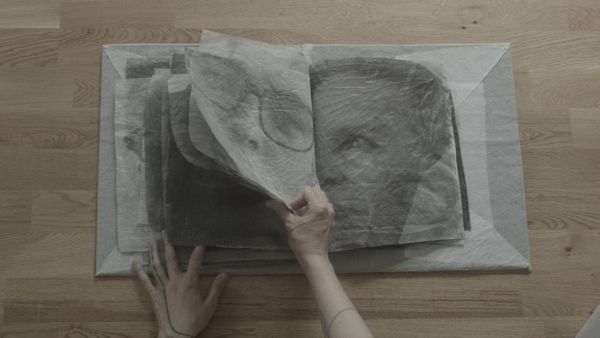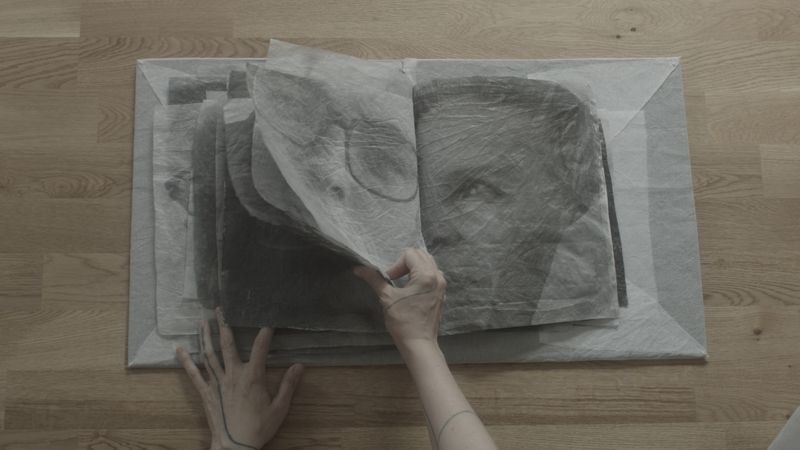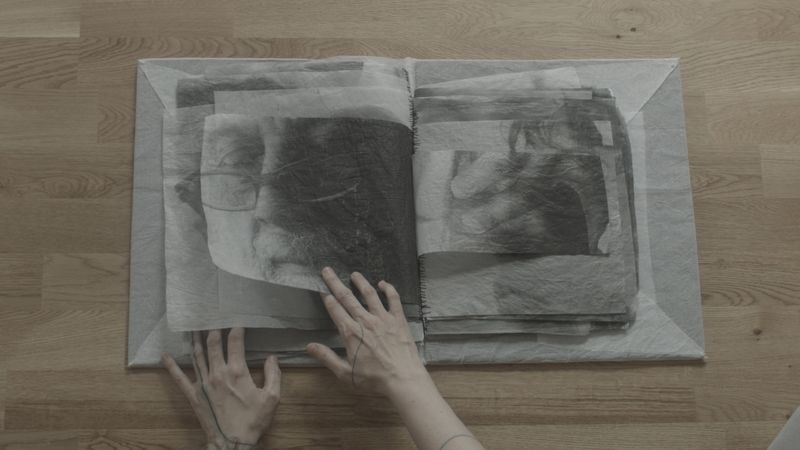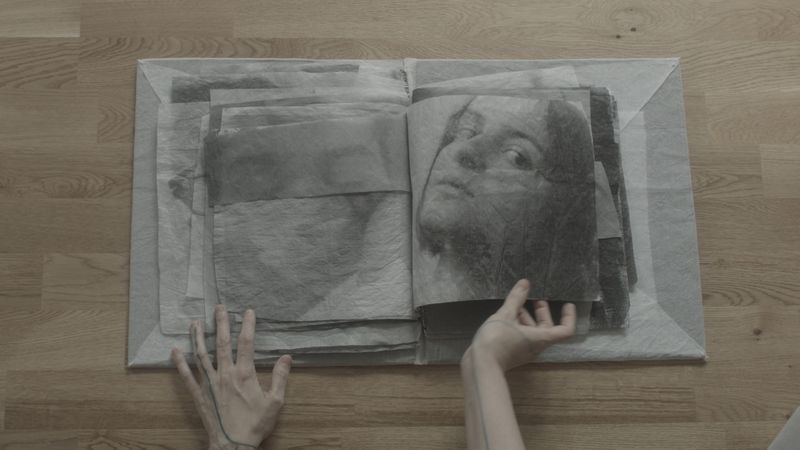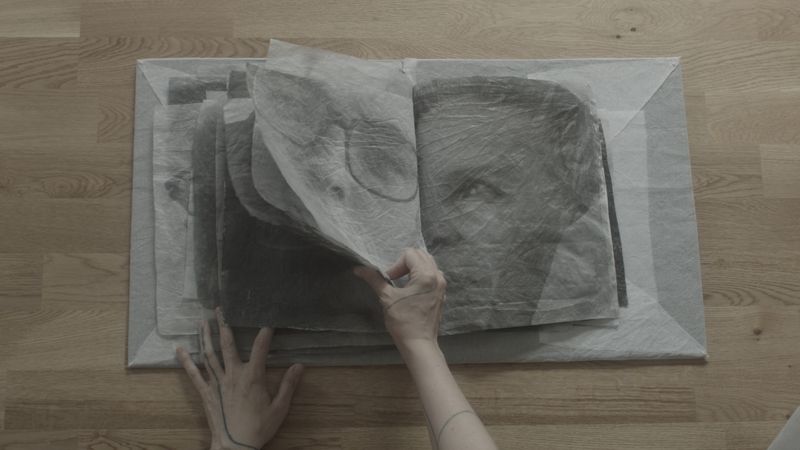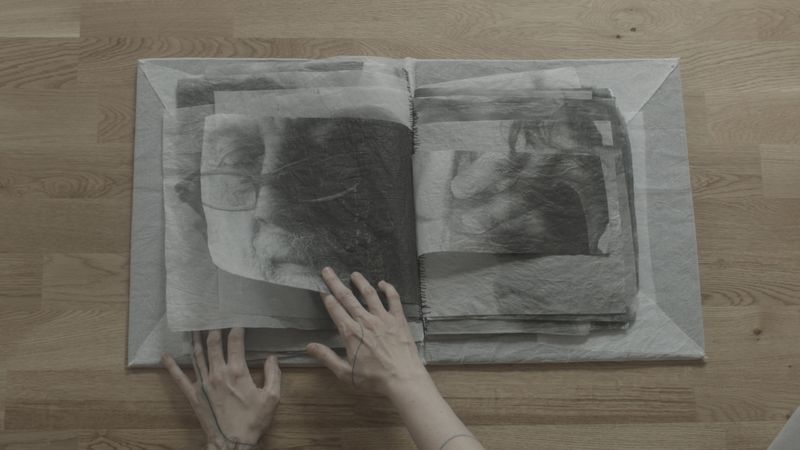liquid emulsion book
-
Dates2016 - 2017
-
Author
- Topics Portrait, Social Issues, Fine Art
i started into photography when i was 22, i studied, worked in studio, managing a little darkroom and managing some small fine arts photography workshops and ended studying photography again but in london, graduated now i would like to be able to continue working.
My work is related to a specific nostalgia, the nostalgia of the touch, of the hands. Although we are in a digital era, where our hands and fingers are really important, I feel that we are losing our ability of touching.
I have this mental image of a carpenter touching a piece of wood, after being sanded by a tool. Touching once and again, checking if the wood has the perfect shape, if its soft enough or if it requires more sanding. The hands become a tester of what a machine does.
When I work with my images I do the same, my hands are checking once and again. Touching the film, even touching the screen while retouching. My little hands need to check what my eyes have seen. The touch in my case, is the verification that something is real.
I understand photography as a process/development where things and thoughts in my mind become real, but also physically real. That’s why I guess the physicality of photographic medium is important for me. I guess that’s why I’m more obsessed with analogue processes. Long processes add new meanings in each step as different layers of significance.
The camera, the film, the liquids, the enlarger (light again), the paper, liquids again, and dry paper, or other surfaces. Other surfaces like stone, or wood, or glass, I tried with fabric, textiles, natural fibre because photographic liquid emulsion works better with natural fibre based surfaces.
Cotton is one of the easiest natural fibre you can find in different ways of clothing, I was looking for a transparent textile, and a little bit by chance I found organdie, and it worked really well.
They were very delicate pieces of fabric with a nice portrait printed on them, but everybody that looked at them were scared of touching, and actually I wanted people to touch them, because they looked paper and it was fabric, and the sound and the texture were part of the work, so I decided that a book was the perfect idea to make people touch them. Everybody touches a book; they are meant to be touched.
THEORY · REFERENCES · IDEAS
The main idea is to continue working on different fabrics, and making more research about nostalgia, touch and time. I have already references that have been travelling with me during these last years as Irit Rogoff, with her book “Terra Infirma” where the limits, the line, and nostalgia started to make me curious and relating it to some of my way of looking to my work and reinterpreting some significance of it. And the idea of being lost that I link it to the feeling of nostalgia: “Being lost is the active state of existing between paradigms, no longer in one nor yet with the other” (2000, Kovats:74) she adds “This being lost is never unlocatable but always a some-where and a something of ` in-betweens´” […] “It is this duality, this ambivalence between nowhere and somewhere that gives the state of being lost” (2000, Kovats:74). LOST
Svetlana Boym says “nostalgia is a longing of a home that no longer exists or most likely, has never existed”
What about if nostalgia is not related to a home or to a nation or to a house?
What about if nostalgia is this space in-between where we find lost and need to come back or go forward?
What about nostalgia is more related to the body, to the skin, to the touch that we missed at some point in life?
Shira Siegel was a great discovery while looking for some writing about the video of Hollis Frampton’s “nostalgia” I found a great essay written by her that opened my mind. “From the Private to the Public: Photography, Film, and the Transmission of cultural memory in Hollis Frampton’s (nostalgia).” She explains very accurately with help of other references what’s nostalgia and the benefits of it: “Despite its association with melancholia’s unhealthy acts of longing and self-destruction, nostalgia is a legitimate work of memory that actualizes the self in the present moment, necessarily relying on the past as an unfixed entity to learn from, to reinterpret, and to grow from. Without nostalgia, without remembrance and longing for that remembered, any attempts at `wholeness of self´ would be impossible.” REPETITION
Svetlana Boym in my opinion is the perfect link between craft, hands, the manual, the body with the machine, the industrialization, the progress. In her An Off-modern Manifesto says “Yes, this margin of error is our margin of freedom”, “The error is a chance encounter between us and the machines in which we surprise each other” She also says, “Photography offers an elliptical narrative without a happy ending” I totally agree with this relation of inconclusive narrative of photography, she links it with the inconclusive reflexive nostalgia.
Reflexive nostalgia “cherishes shattered fragments of memory and temporalizes space”…. “is ironic and humorous, it reveals that longing and critical thinking are not opposed to one another, as affective memories do not absolve one from compassion, judgment or critical reflexion” I think this sentence is linked totally to Shira Sigel sentence. The revisiting and the non- conclusive, as photography.
To be honest I still have lots to read and research, but this is the actual moment of reading. It’s been 3 years of references, this is a quick brief.
I have added now two new books, “TOUCH. The science of the sense that makes us human” David J. Linden, and “Art as Therapy” Alain de Botton and John Armstrong.
HAVE A LOOK TO THE BOOK
